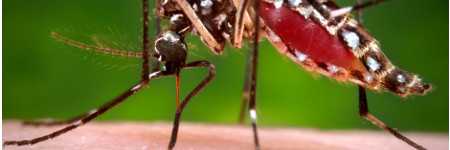Reminder about Preventing Sharps Injuries and the Zika Virus
News media have reported that a researcher was infected with the Zika virus during a laboratory experiment. The news media reports associate the infection with a job-related needle stick. We would like your help in highlighting a reminder that interim guidance is available for preventing work-related infections from the Zika virus in laboratories. The interim guidance is included in a fact sheet issued in April by the Occupational Safety and Health Administration (OSHA) and the National Institute for Occupational Safety and Health (NIOSH), at http://www.cdc.gov/niosh/topics/outdoor/mosquito-borne/pdfs/osha-niosh_fs-3855_zika_virus_04-2016.pdf
Zika virus is not the only pathogen than can be transmitted by preventable sharps injuries. Other examples include human immunodeficiency virus (HIV) and hepatitis B and C viruses. NIOSH recently published a fact sheet on preventing sharps injuries in home health care, but the principles also apply to other settings. It is available at https://www.cdc.gov/niosh/docs/2012-123/ . An OSHA fact sheet on the Bloodborne Pathogens Standard, which mandates a comprehensive approach to preventing infectious diseases caused by sharps injuries, is available at https://www.osha.gov/OshDoc/data_BloodborneFacts/bbfact01.pdf.
Thanks for your help in passing along this reminder to your fellow professionals, practitioners, and colleagues who may have responsibilities or roles in safe laboratory practices. If you have any questions about the fact sheet on interim guidance for preventing work-related Zika infections, please contact NIOSH at eocwsh2@cdc.gov.
.- Page last reviewed: June 16, 2016
- Page last updated: June 16, 2016
- Content source:
- National Institute for Occupational Safety and Health Education and Information Division


 ShareCompartir
ShareCompartir
